resting and action potentials, synapses
1/41
There's no tags or description
Looks like no tags are added yet.
Name | Mastery | Learn | Test | Matching | Spaced |
|---|
No study sessions yet.
42 Terms
resting potential
-electrical charge across membrane of neuron when it is not actively sending a signal
-polarised
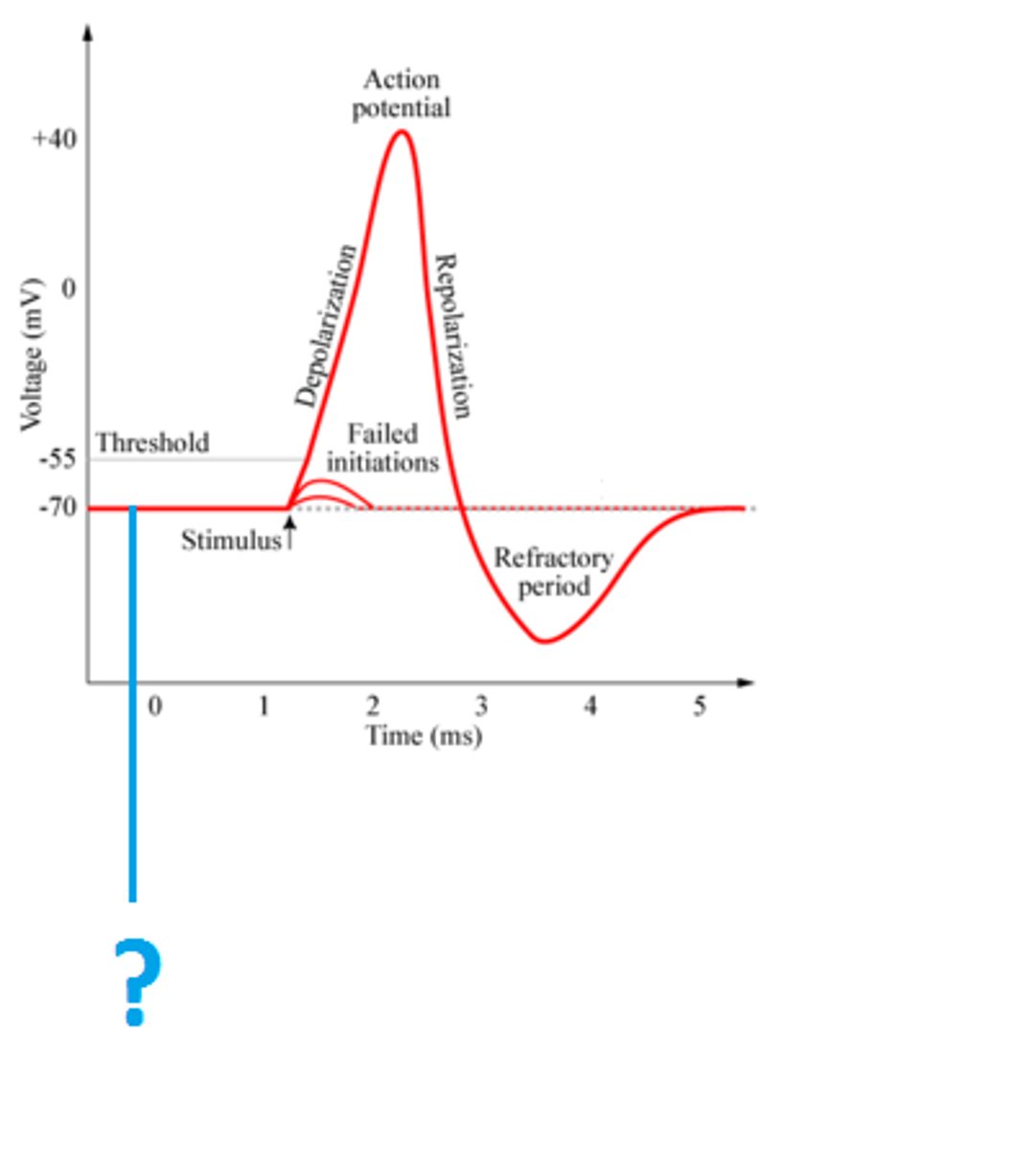
ionic concentration
The number of K+ is greater inside the neuron and Na+ is greater outside of the neuron
How does the sodium-potassium pump maintain ionic concentration
Pulling three Na+ ions in
Pushing two K+ ions out
electrical gradient
difference in electrical charges between the inside and outside of the cell
-Opposite charges attract: Na+ is attracted to the negative charge inside the neuron K+ is attracted to the negative charge inside the neuron
chemical gradient
Concentration difference of ions across a membrane
-Na+ is more concentrated outside so are more likely to be pulled into the neuron
-K+ is more concentrated inside so are more likely to be pushed out of the neuron
electro-chemical force
combination of electrical/chemical gradient
action potental
a neural impulse; a brief electrical charge (message) that travels down an axon

all-or-none phenomenon
action potentials either happen completely, or not at all
-once neuron reaches threshold it was fire action potential at full strength
-if stimulus doesnt reach threashold there is no action potential
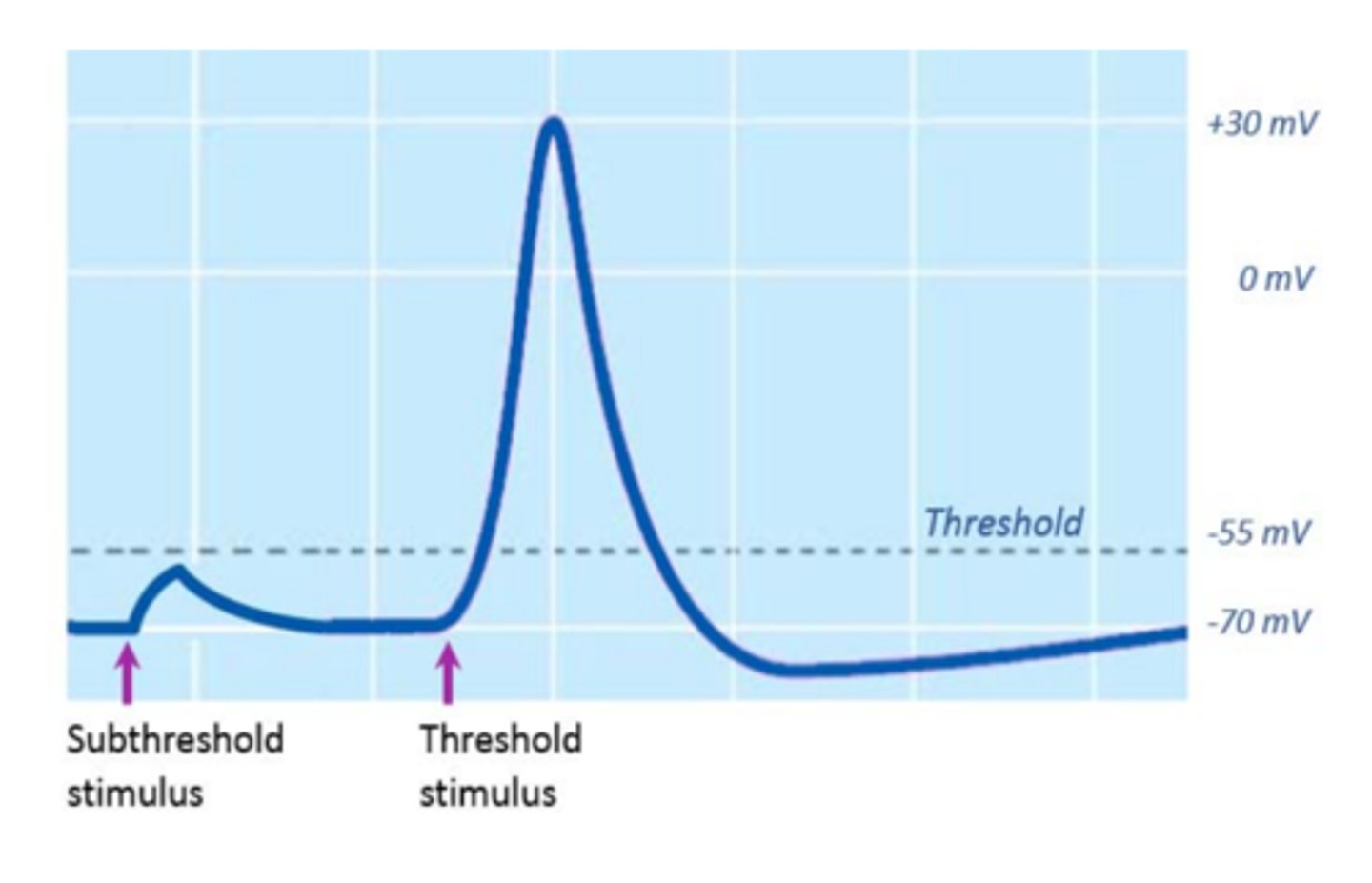
action potentials steps
Rising: Rapid depolarization, Na+ channels open
Peak: Na+ channels close
Falling: Repolarization, K+ channels open
Undershoot: Hyperpolarization, refractory period (1-4 ms), and return to resting potential

propagation
-process the electrical signal moves across axon
-local
-depolarisation
-repolarisation
-after occur, the segment of axon is resting

depolarisation
a change in the electrical charge of a cell's membrane, making it less negative (more positive) inside compared to the outside
hyperpolarisation
change in a cell's membrane potential that makes it more negative
synapse
the junction between the axon tip of the sending neuron and the dendrite or cell body of the receiving neuron
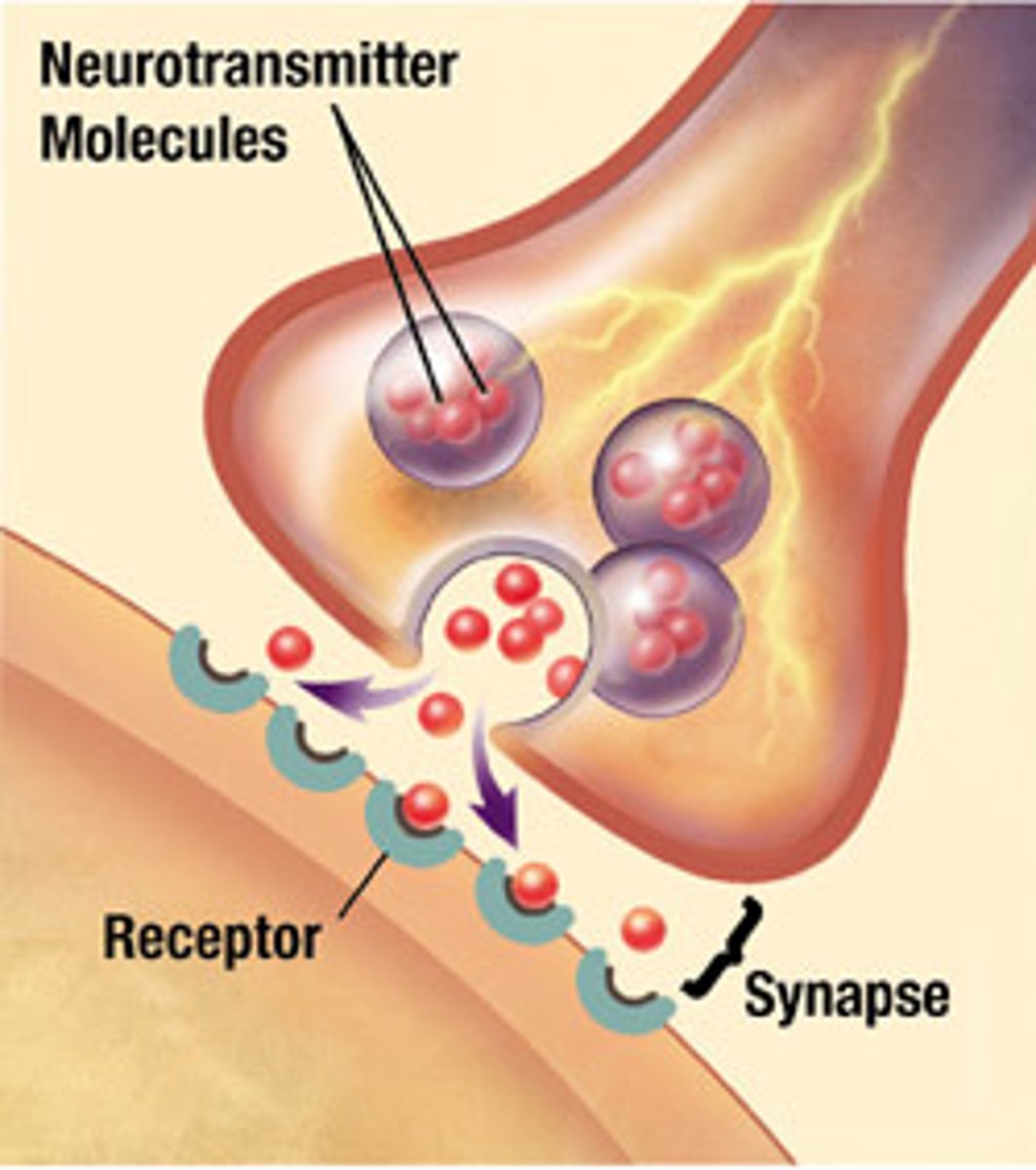
presynaptic neuron
delivers synaptic transmission
post-synaptic neuron
stimulated by events at the synapse
neurotransmitters
chemicals created in axon/soma and diffused across synapse
synapse communication steps
1. neurotransmitters are synthesised in terminal button/soma and stored in terminal buttons
2. action potential arrives at terminal button and opens Ca+ channels and releases neurotransmitters called exocytosis
3. neurotransmitters bind to receptors on dendrites/soma of post-synaptic neurons release many different types of neurotransmitters can bind to different receptor types, allowing for complex signalling
4, neurotransmitters separate from post-synaptic neuron
5. neurotransmitters are reabsorbed by the pre-synaptic neuron
6, post-synaptic neurons release retrograde neurotransmitters
7. pre-synaptic neuron slows release of neurotransmitters negative feedback sites respond to retrograde neurotransmitters
lock and key model
neurotransmitters and receptors can have different shapes; not all neurotransmitters can open all receptors
2 types of neurotransmitter receptors
ionotropic and metabotropic
Metabotropic receptors
-Receptor binding activates an intracellular messenger without immediately opening ion channel
-Intracellular messenger opens ion channel
-Slower sequence of metabolic reactions (> 30 ms)
-Longer lasting (seconds, minutes, or longer)
ionotropic
-receptor binding immediately opens ion channel
-directly affects the membrane
-very quick and short

Dale's principle
a typical neuron will release only one type of neurotransmitter at its terminal buttons. However, a typical neuron usually has more than one type of receptor
amino acids
building blocks of proteins; example glutamate, gaba
excitatory post-synaptic potential
postsynaptic potential that makes the postsynaptic neuron more likely to produce an action potential
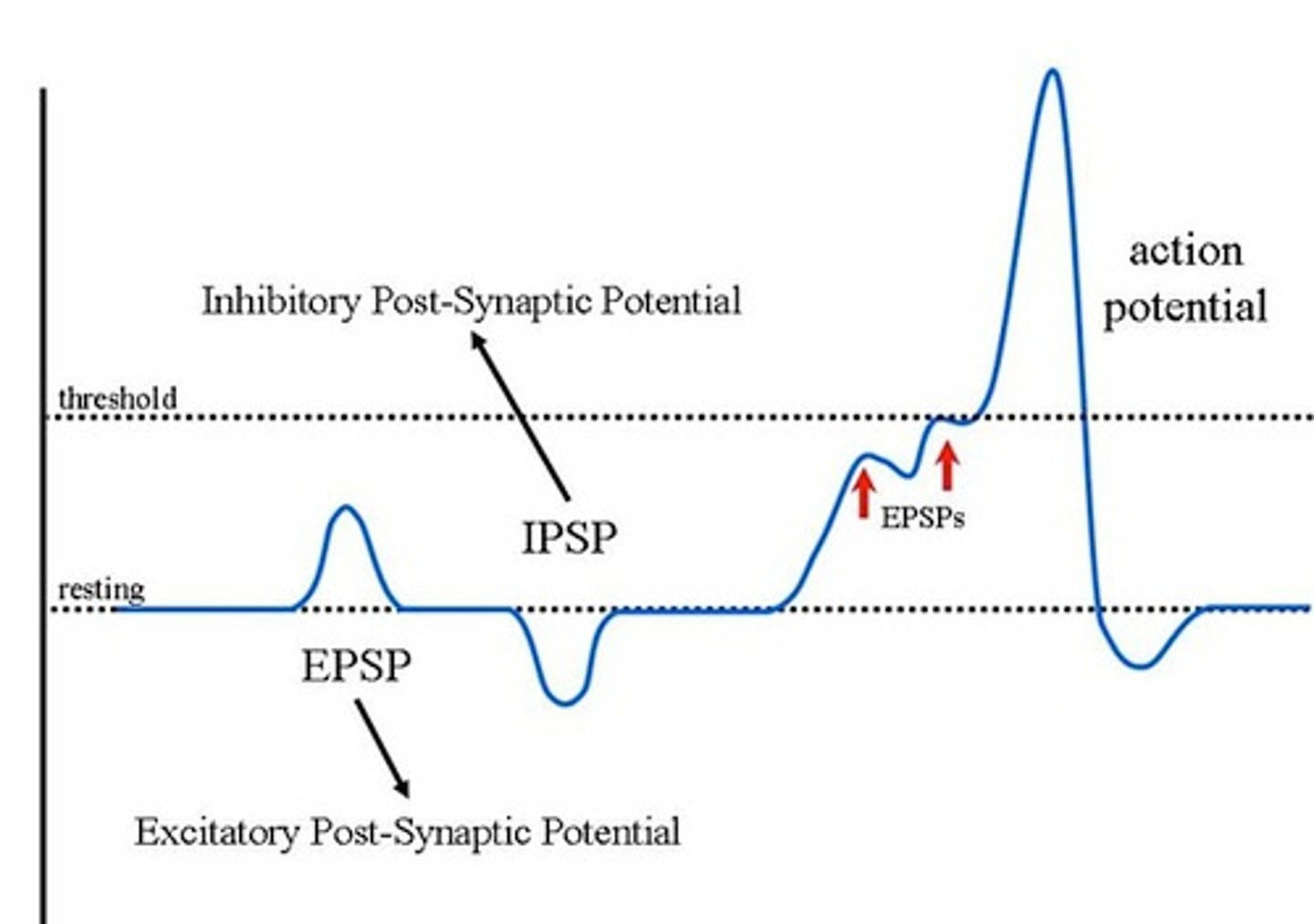
inhibitory post-synaptic potential
makes it less likely to produce action potential

Glutamate
-one of the most common neurotransmitters
-An excitatory neurotransmitter
-It binds to NMDA and AMPA receptors
-Causes an excitatory post-synaptic potential
GABA
-one of the most common neurotransmitter
-An inhibitory neurotransmitter
-It binds to GABA receptors
-Causes an inhibitory post-synaptic potential
summation
the process that determines whether or not an action potential will be generated by the combined effects of excitatory and inhibitory signals
types of summation
spatial and temporal
spatial summation
summing potentials that arrive at different synapses
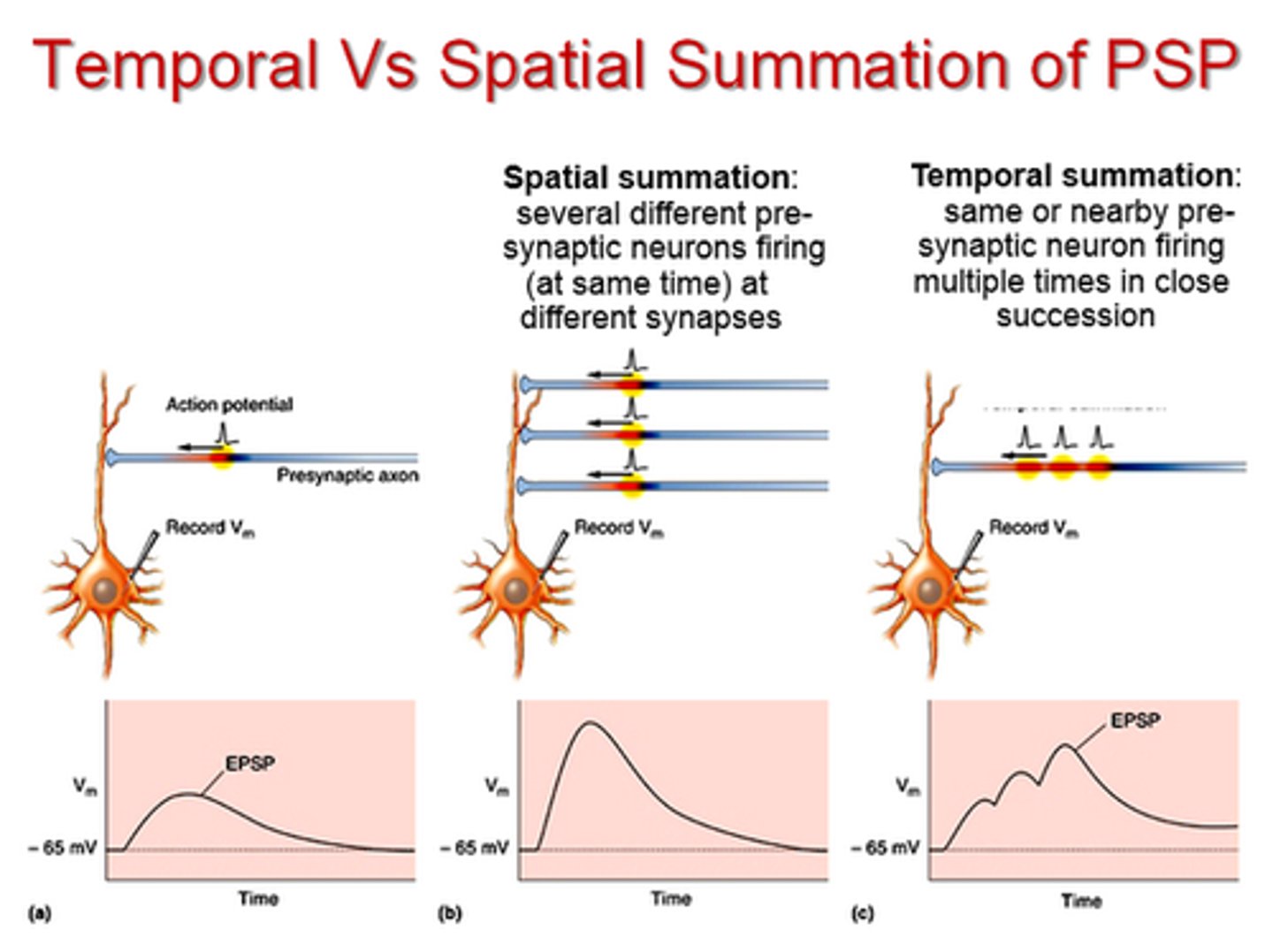
temporal summation
summing potentials that arrive at different times at the same synapse
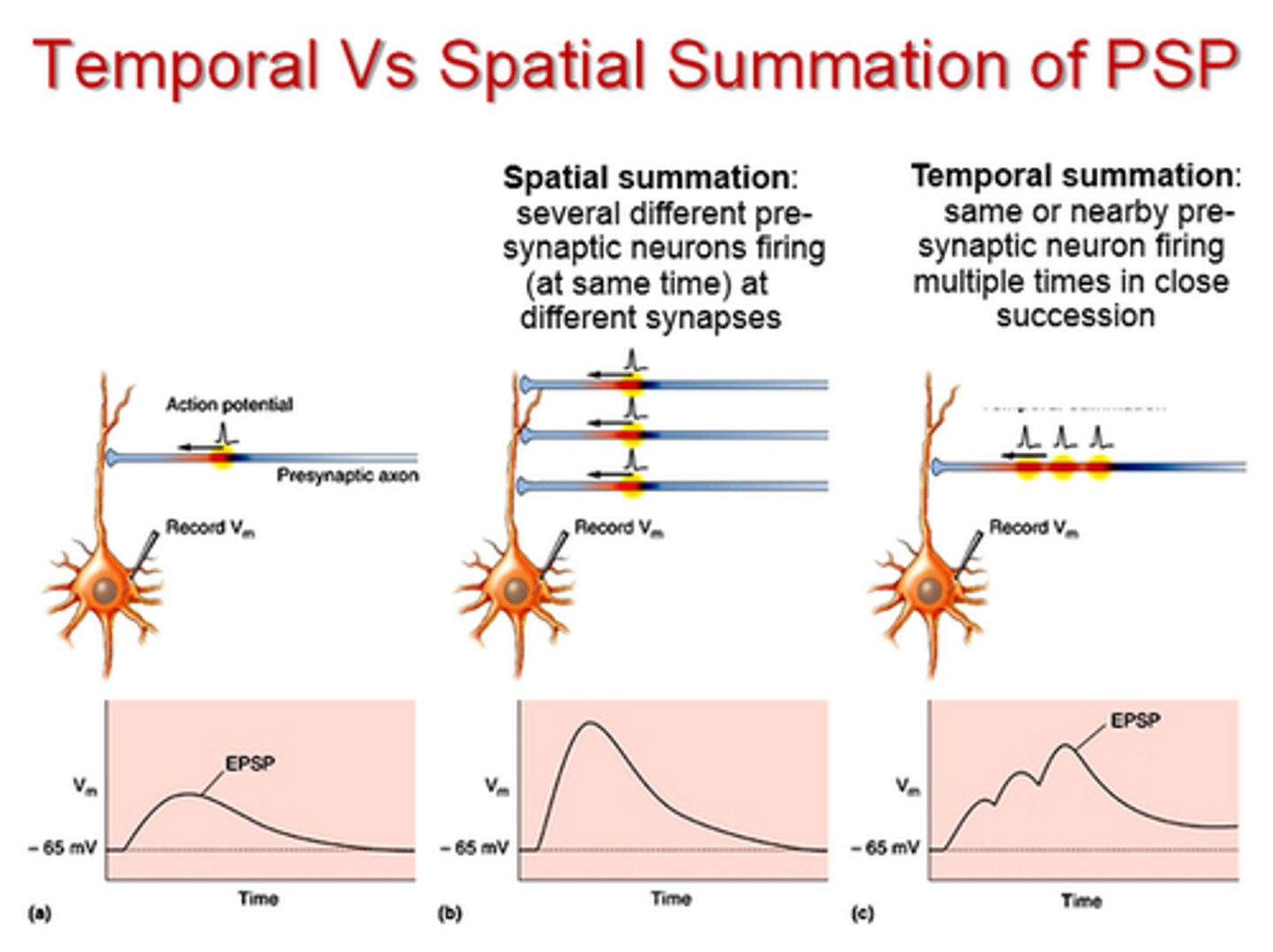
steps of summation
1. An excitatory post-synaptic potential
2. Temporal summation of two excitatory postsynaptic potentials
3. Three excitatory post-synaptic potentials presented at slightly different times exceed threshold
4. Simultaneous excitatory post-synaptic potentials combine spatially to exceed threshold
5. Inhibitory post-synaptic potential
6. Resting potential
neuromodulators
1. Do not excite or inhibit the neuron directly; instead, they modulate the neuron's responsivity and sensitivity to various inputs
2. Can increase or decrease the release of neurotransmitters (usually the chemicals that bind to metabotropic receptors)
3. Effects can be widespread because they are released into extracellular fluid, ventricles, or bloodstream
drugs and the synapse
-Drugs take advantage of the post-synaptic mechanisms of natural chemicals
-Research on drug effects teaches us about drugs, neurotransmitters, and synaptic functioning
3 ways drugs affect synapse
-increase or decrease the synthesis of neurotransmitters
-increase/decrease the release if neurotransmitters
-activate/block the receptors that respond to neurotransmitters
agonist
Drugs that mimic or increase the effect of neurotransmitters
Antagonist
Drugs that block the effect of neurotransmitters
Inverse agonist
Drugs that decrease the effect of neurotransmitters
Inverse antagonist
Drugs that activate the effect of neurotransmitters
Direct
Drugs that bind to neurotransmitter receptor
Indirect
Drugs that do not bind to neurotransmitter receptor
intracellular messenger
small molecules within cells that transmit signals from the cell surface to various intracellular targets, ultimately affecting cellular processes (common example includes calcium)